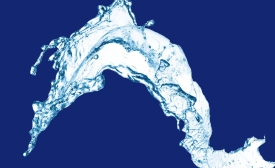Americas
WASHINGTON --- America’s image abroad remains strong, retaining its post-Bush worldwide increase in 2009. But in new survey data released here this morning by Gallup, the U.S. has lost significant support in the past year in Africa and Latin America.

Water diplomacy could and should play a larger role in USAID and the U.S. State Department.
APDS Blogger: Riccardo Ruffolo
On the last day of the Masters of Public Diplomacy delegation’s visit to Washington D.C., some of us had the opportunity to visit the Delegation of the European Union to the United States. The delegation included University of Southern California alumna and Senior Communications Advisor, Stacy Hope; Assistant Press Officer, Ren Althouse; and three Press & Public Diplomacy (PPD) interns.
One of the most significant factors shaping foreign visitors’ opinions is the way they are received when entering the country. For advocates of U.S. public diplomacy, this is particularly important because of the value of having outsiders come to America to gain an appreciation of the freedoms and lifestyle enjoyed here.
CPD Blog Manager: Naweed Lemar
The American Music Abroad program is designed to communicate America’s rich contributions to the global music scene as it fosters cross-cultural communication and people-to-people connections to global audiences. Today, American Voices is proud to administer the American Music Abroad program on behalf of the U.S.
WASHINGTON --- Tara Sonenshine, nominated to serve as Under Secretary of State for Public Diplomacy and Public Affairs, offered advice this morning to public diplomacy observers: Watch China.
“We are challenged every day by what the Chinese are doing in public diplomacy,” she said.
APDS Blogger: Marissa Cruz-Enriquez







